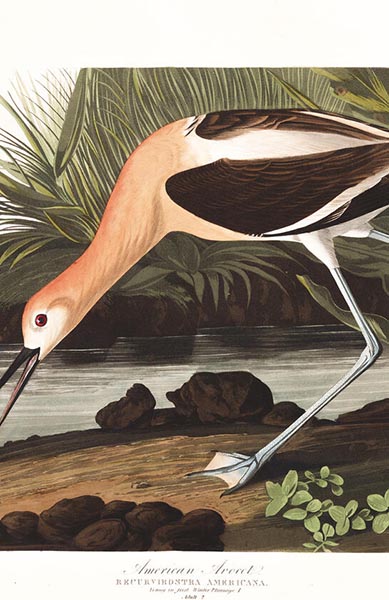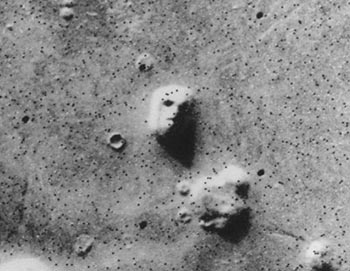Not too early for a drink because it's 2020 everywhere
— Trey (@treydayway) July 17, 2020
Handy
Now here's some really useful wearable tech: Engineers at UCLA have designed a high tech glove that translates sign language into speech in real time!
The system includes a pair of gloves with thin, stretchable sensors that run the length of each of the five fingers. These sensors, made from electrically conducting yarns, pick up hand motions and finger placements that stand for individual letters, numbers, words and phrases.
The device then turns the finger movements into electrical signals, which are sent to a dollar-coin–sized circuit board worn on the wrist. The board transmits those signals wirelessly to a smartphone that translates them into spoken words at the rate of about a one word per second.

iMASC
Engineers and researchers at MIT and Brigham and Women’s Hospital have a created a new type of face mask that worked as well as a N95 respirator at filtering out virus-containing particles. Says Apple News:
The iMASC is a clear rubber mask that covers the nose and mouth, with a nose bridge and two nylon elastic straps that go around the head. The fit was based on the 3M 1860 respirator, a particular style of N95 mask that’s commonly used by healthcare providers.
The biggest innovation? While N95 masks are made entirely from a special material that filters out airborne droplets and fluids that could contain the Covid-19 virus, the new MIT mask is made from silicone, with slots for just two small, disposable disks of the N95 material (which serve as filters). That means the masks themselves can be quickly and easily sterilized and reused, and though the small filters must be thrown out, each mask requires much less N95 material.
Face It
— Shitty Future (@Shitty_Future) July 20, 2020
Ace of Cups
If there is one company that symbolizes the current pandemic better than any other it would be Zoom. Sure, Zoom predated the pandemic (we have been using it for our webinars for several years), but it was COVID that made it a household name.
That’s happened before. Fast Company has a look at a new “technology” that became a household staple thanks to the original 1918 pandemic: Dixie Cups (or, the way things are going, probably just Cups before long). Anyway:
In 1907, Boston attorney Lawrence Luellen created a cup. It wasn’t made of glass or metal—the norm at the time. Instead, it was made of paper so it could be thrown away after use. While not earth-shattering in our current context, in the early 1900s there were no disposable paper tissues or paper towels. A cup made of paper was a novel idea, one with a noble goal: Luellen hoped his paper cups could help stop the spread of disease.
What makes this century-old startup story especially poignant today is that Dixie cups, as they came to be known, achieved only moderate growth for 10 years until the Spanish flu of 1918 made disposable cups a necessity and helped the Dixie cup become a household name. In 2012, Smithsonian Magazine even called the Dixie cup a “life-saving technology” that helped stop the spread of disease.
Who?
Read this three times. There’s literally nothing about Doctor Who. https://t.co/NzwOQpzOF6
— (((Josh Malina))) (@JoshMalina) July 22, 2020
Proto-Zoom
This has to win the prize for best thing we have seen online in a long time. Via Boing Boing, a group of YouTubers called Squirrel Monkey has made a “mockumentary” of instructions for making Zoom calls in 1988. For those of us who were around and navigating computers and connectivity in 1988, this is bang on. “Learn how to use Zoom in 12 easy steps!”
Don’t Google That
At the Ho'olehua Post Office in Hawaii you can decorate coconuts, instead of postcards, and send them to anyone around the world. The program, started in 1991, is called ‘Post-a-Nut’.
— Quite Interesting (@qikipedia) July 20, 2020
Proto-Google
Gizmodo asks, for the under-30s crowd perhaps, “What Did People Use Before Google to Search the Web?” Many of us remember using Yahoo!, Alta Vista (it was a running joke in the sitcom Parks & Recreation that everyone in the town of Pawnee, Ind., was still using Alta Vista in the 2010s), Web Crawler, Lycos, etc., but some of the answers from the panel of experts they asked turn out to be far more interesting than simply recalling a bunch of old search engines.
It’s important to remember that 1990s web searching had different goals and incentives for people “surfing the web.” In early online cultures,
This has taken a strange, National Geographic turn all of a sudden. We continue.
finding a fact or product wasn’t always the goal of searching. Instead, search engines helped people discover and explore digital resources and experience the world wide web....Compared to today’s search experiences, early web search was more of a questing experience. By quest, I mean taking an active role in navigating and discovering content, in ways that personalized, curated search from platforms like Google and Facebook have largely usurped with audience targeted advertising.
...
Today, when we talk about “search” we’re usually not thinking about browsing indexes or visiting a webpage. Instead, we’re thinking about scrolling and swiping information from feeds and apps that bring together lots of different content and user profiles into one stream. Or maybe we’re expecting a precise answer to be served up as an extracted snippet of information from an online resource. Most contemporary search features, especially search within platforms like Facebook, Amazon, or the App Store have monetized the process even further by collecting more and more user data to the point where tracking user behavior like search terms and browsing habits are nearly always required for people to make use of these increasingly essential services. When we ask ourselves what we’ve lost in considering these earlier search engines, we should try and imagine all the possibilities we’ve foreclosed by granting a monopoly on searching all the worlds’ online, digital information to one firm like Google, and then ask ourselves: how else can I surf the web?
When Databases Attack
Uh, no, I am not. Go home, algorithm — you're drunk. pic.twitter.com/QIRl6OEtEY
— Michael Marshall Smith (@ememess) July 20, 2020
Ice Scream
It’s just been that kind of year, and in the event that screaming inside your heart just won’t cut it, now you can scream into the Icelandic wilderness—via a Web app. Just go to https://lookslikeyouneediceland.com, record your scream, and it will be broadcast from a speaker in Iceland. It doesn’t have to be a scream of course, but we’re hard-pressed to think of anything more appropriate.
Downward Effin Dog!
David Mitchell’s BBC Radio 4 panel game “The Unbelievable Truth” just completed its latest series (with all the panelists calling in remotely). The premise of the game is that each panelist (usually a British comedian) reads a humorous essay on an assigned topic and tries to “smuggle” five true statements past the other panelists. It’s not only a very funny show, but one also learns a variety of things. One of the truths in the sixth program is that “rage yoga” is a thing. We had to follow up on that and, yes, it exists:
Lindsay Istace, the founder of Rage Yoga, describes it as “alternative yoga for the modern badass." "It's meant to be a different approach to yoga for those who find their peaceful center in a different way," she says. The practice "involves a little bit of extra chaos and a sense of humor," she says. Think: war cries, heavy metal guitar riffs, occasional dirty jokes, f-bombs, and yes, even drinking. It’s definitely a vibe.
Another thing we learned from a recent episode is that the mystery behind the Mona Lisa’s enigmatic smile may have been high cholesterol:
Vito Franco, a professor of pathology at the University of Palermo, says the model’s face in the 16th-century painting suggests a subcutaneous accumulation of cholesterol around her left eye. If so, the model, thought to be Lisa Gherardini, the wife of a Florentine silk merchant, had very high cholesterol. Mr. Franco said there was also evidence on the Mona Lisa’s hand of benign tumors composed of fatty tissue.
Queen’s Pawn
It took her almost 2 hours to behead the poor guy. pic.twitter.com/zp2Aars4Xx
— J. Elvis Weinstein (@JElvisWeinstein) July 17, 2020
No Shows
Speaking of David Mitchell, his recent Guardian column decries what is probably one of the rudest things someone can do as businesses start to reopen: make restaurant reservations and then fail to show up.
It’s happening to restaurants all over the country with Gusto, a small chain of Italian restaurants in the north, Midlands and Scotland, reporting 800 no-shows in the first four days after reopening. So it’s not just 27 people – it’s probably running into thousands nationally. Some of those people are probably reading this article. If so: hello! What on earth were you thinking, you idiots?!
The harm it causes is obvious: the poor nervous chefs, managers and owners of the restaurants, desperate to claw their way back towards solvency, buoyed up by seeing that there are some bookings, engaging the staff and purchasing the ingredients ready to serve all the people who say they’re coming and then left baffled and out of pocket, feeling stupid in their efforts and all the more fearful for the future.
Tomorrow Never Knows
I wonder if I will ever stop telling my computer to "Remind me tomorrow" about updates.
— roxane gay (@rgay) July 21, 2020
The Discovered Country
Have you ever wanted to fake your own death? Yes, us, too, quite often, and while we certainly cannot recommend it, if you do want to go down that road and forge your death certificate, here’s a pro tip: get the typography right and, most importantly, proofread it. From the NY Times:
The name of the deceased was typed in an unusual font on the death certificate. Other details, like the manner of death, appeared to be printed in much smaller type than normal. And then there was the biggest red flag that the document was fake: The name of the department that would have issued it was misspelled.
The death certificate, which supposedly came from the New Jersey Department of Health, Vital Statistics and Registry, had it rendered as “Regsitry.”
And Now for Something Completely Different
If you’re having a rough day please watch this cow singing Boehemian Rhapsody at a stop light.
— Rex Chapman???? (@RexChapman) July 22, 2020
Also, wear a mask...pic.twitter.com/izpZjXboRw
The Thing with Feathers
John James Audubon’s Birds of America, published between 1827 and 1838, comprises 435 life-size watercolors of North American birds. Unless you’re Tippi Hedren, it’s easy to appreciate the beauty of these illustrations. And now, all the Audubon prints have been digitized and are available as high-resolution downloads—for free.

Although these days we’re apt to prefer the Effin Birds collection.
Bird Brain
they've had enough pic.twitter.com/qK3wngDJnB
— Pablo Rochat (@PabloRochat) July 21, 2020
Get Your Buns Over Here
Hoo boy, museum curators are starting to lose it. They need some visitors, stat! From the Guardian (not The Onion):
Museum curators have engaged in an online battle of the bottoms, assembling on Twitter to present their most captivating behinds, as part of a campaign designed to engage would-be museum visitors who, with many galleries closed because of the coronavirus pandemic, cannot ogle the buns in person.
We hasten to add that they are referring to the bottoms of nude statues. We continue.
The #CuratorBattle began in April, but it was June’s theme, #BestMuseumBum, that has had people enthralled for weeks.
Soon, categories blossomed to include: bee bottoms, Tudor bums, angular side bum, divine booty, tessellated maenad posteriors, weaponised bum, spectacularly tattooed behind and potato-shaped animal butts.
Then things got weird.
Artworks emerged based on creatures not commonly associated with having bottoms, such as blowflies, mushrooms and fish...
The Cheese Stands Alone
Call 9-1-1, Velveeta murdered Microsoft ?? ?? pic.twitter.com/tBjw6vMsRd
— Rebecca I. Allen (@rebeccaallen) July 21, 2020
Oblectáte, nunc híc sumus
Finally, we leave you with Nirvana’s “Smells Like Teen Spirit” translated into Classical Latin.
This Week in Printing, Publishing, and Media History
July 20
1822: Give peas a chance—Austro-German monk, geneticist and botanist Gregor Mendel born.
1903: The Ford Motor Company ships its first automobile.
1938: The United States Department of Justice files suit in New York City against the motion picture industry charging violations of the Sherman Antitrust Act in regards to the studio system. The case would eventually result in a break-up of the industry in 1948.
1969: Apollo 11’s crew successfully makes the first manned landing on the Moon in the Sea of Tranquility. Americans Neil Armstrong and Buzz Aldrin become the first humans to walk on the Moon six and a half hours later.
July 21
1816: German-English journalist and founder of Reuters Paul Reuter born.
1899: Ernest Hemingway born.
1911: Marshall McLuhan, Canadian author and theorist, born.
1948: Doonesbury creator Garry Trudeau born.
1969: At 02:56 UTC, astronaut Neil Armstrong becomes the first person to walk on the Moon.
July 22
1598: William Shakespeare’s play The Merchant of Venice is entered on the Stationers’ Register. By decree of Queen Elizabeth, the Stationers’ Register licensed printed works, giving the Crown tight control over all published material.
1893: Katharine Lee Bates writes "America the Beautiful" after admiring the view from the top of Pikes Peak near Colorado Springs, Colo.
1932: American novelist Tom Robbins born.
July 23
1829: In the United States, William Austin Burt patents the typographer, a precursor to the typewriter.
1888: American crime novelist and screenwriter Raymond Chandler born.
Happy birthday Raymond Chandler pic.twitter.com/hpE5NtQsjJ
— Letters of Note (@LettersOfNote) July 23, 2020
1903: The Ford Motor Company sells its first car.
1957: English comedian, actress, and screenwriter Jo Brand born.
1962: Telstar relays the first publicly transmitted, live trans-Atlantic television program, featuring Walter Cronkite.
July 24
1847: Richard March Hoe patented the rotary-type printing press.
1895: English poet, novelist, and critic Robert Graves (I, Claudius and Claudius the God) born.
1900: Zelda Fitzgerald, American author, poet, and wife/drinking buddy of F. Scott Fitzgerald born.
1901: Author O. Henry is released from prison in Columbus, Ohio, after serving three years for embezzlement from a bank. The ending was not a surprise.
1969 : Apollo 11 splashes down safely in the Pacific Ocean.
July 25
1837: The first commercial use of an electrical telegraph is successfully demonstrated in London by William Cooke and Charles Wheatstone.
1965: Judas! Bob Dylan goes electric at the Newport Folk Festival.
1976: Viking 1 takes the famous Face on Mars photo.

July 26
1502: German printer Christian Egenolff born.
1856: Irish playwright, critic, and Nobel Prize laureate George Bernard Shaw, born.
1887: Publication of the Unua Libro, founding the Esperanto movement.
1894: English novelist and philosopher Aldous Huxley born.
1928: American director, producer, screenwriter, and cinematographer Stanley Kubrick born.
1989: A federal grand jury indicts Cornell University student Robert T. Morris, Jr. for releasing the Morris worm, thus becoming the first person to be prosecuted under the 1986 Computer Fraud and Abuse Act.














